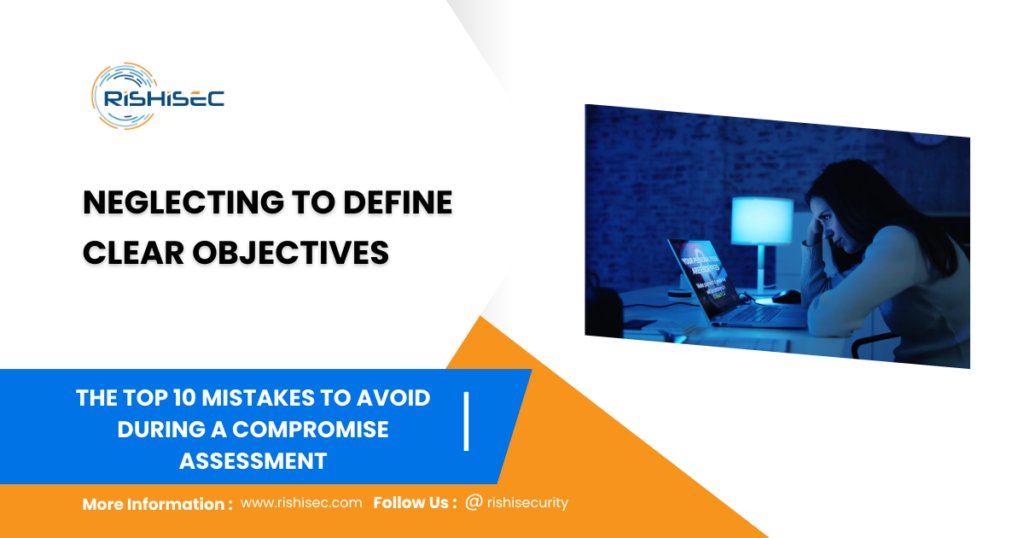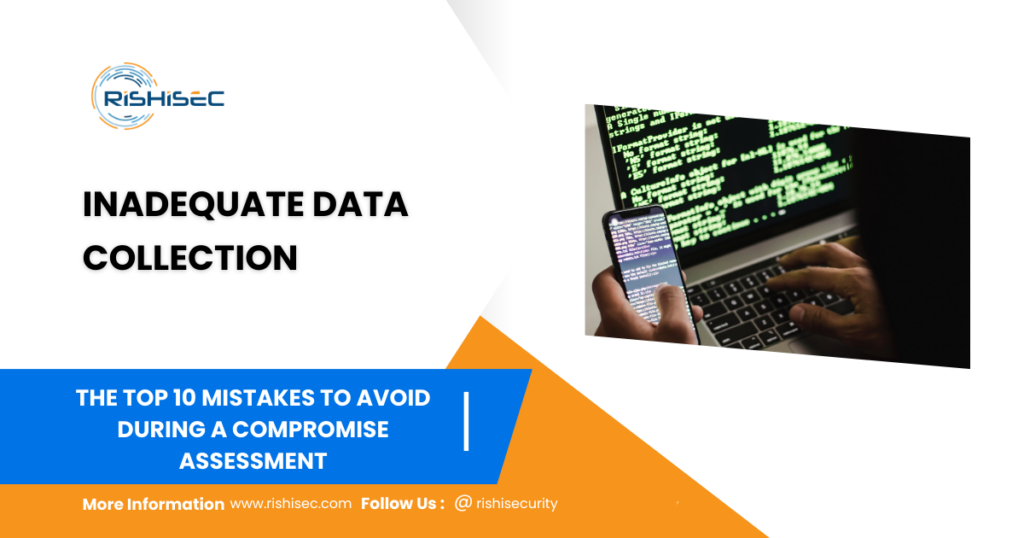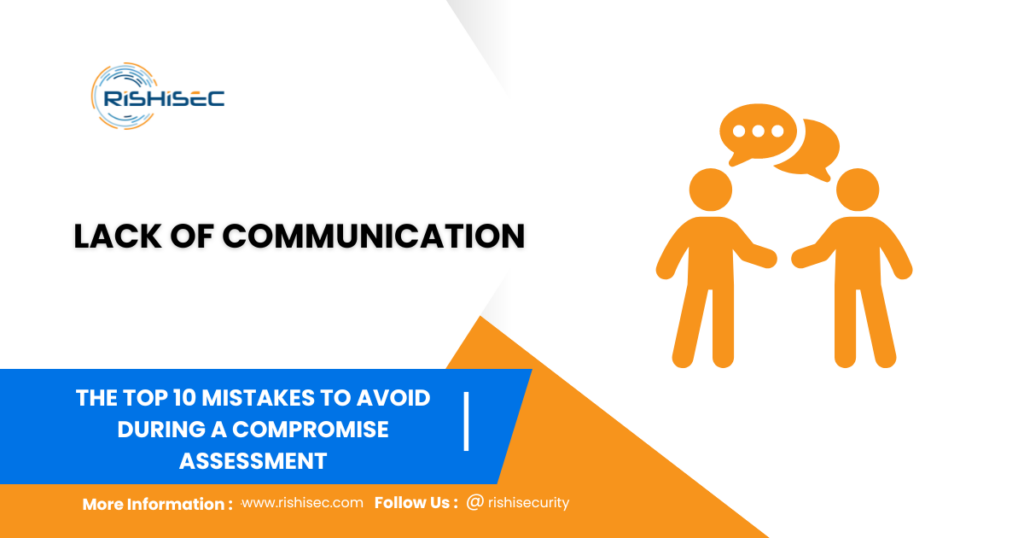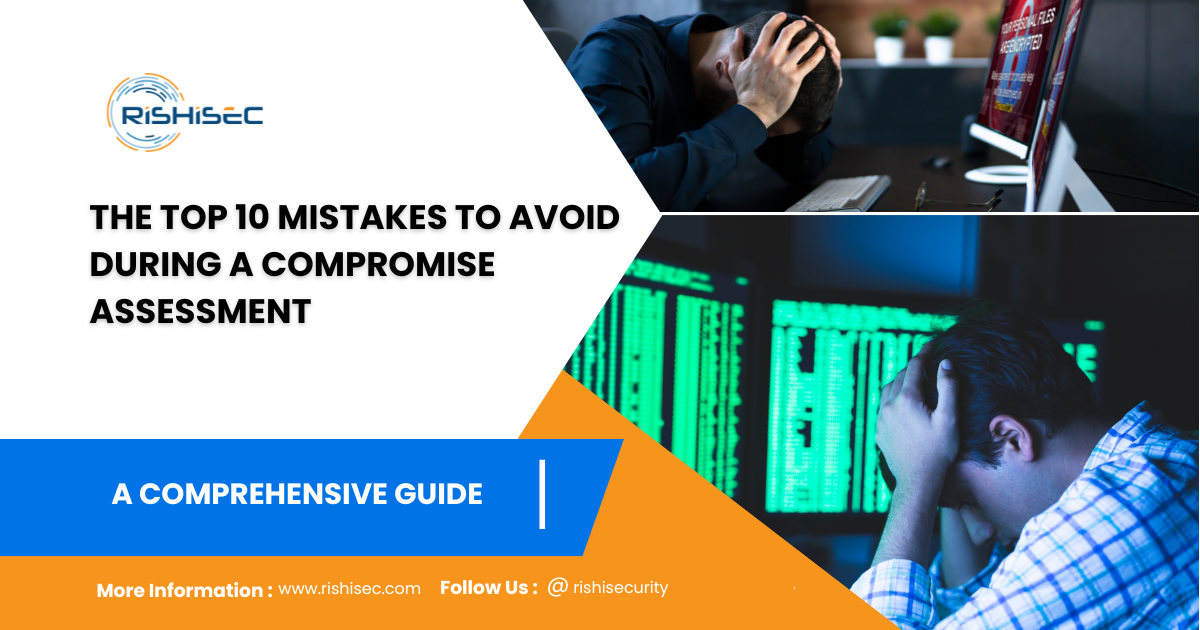Contents
- 1 The Top 10 Mistakes to Avoid During a Compromise Assessment
- 2 1. Neglecting to Define Clear Objectives
- 3 2. Skipping the Scope Definition
- 4 3. Inadequate Data Collection
- 5 4. Ignoring Historical Data
- 6 5. Overlooking External Threats
- 7 6. Inconsistent Testing Procedures
- 8 7. Failure to Prioritize Findings
- 9 8. Neglecting to Update Assessment Tools
- 10 9. Lack of Communication
- 11 10. Failing to Implement Recommendations
The Top 10 Mistakes to Avoid During a Compromise Assessment
You need compromise assessments to identify and address vulnerabilities within your organization’s digital infrastructure. They play a critical role in maintaining strong cyber security and ensuring organizational stability. However, if you overlook certain common pitfalls, you can undermine the effectiveness of these assessments. This comprehensive guide explores the top 10 mistakes to avoid during a compromise assessment so that your process remains thorough, actionable, and aligned with best practices.
1. Neglecting to Define Clear Objectives

Neglecting to Define Clear Objectives
A fundamental mistake in compromise assessments is failing to set clear, actionable objectives. Without a well-defined goal, the assessment can become unfocused and ineffective. Objectives should be specific, measurable, achievable, relevant, and time-bound (SMART). For instance, if the goal is to identify vulnerabilities in a new application, the assessment should be targeted towards that application, detailing what aspects (e.g., code review, penetration testing) will be evaluated.
Example: An organization aiming to improve its network security might set an objective to “identify all external-facing vulnerabilities within the next quarter” rather than a vague goal like “improve network security.”
2. Skipping the Scope Definition
Defining the scope of the assessment is crucial to its success. A common error is to skip this step, leading to incomplete evaluations and overlooked vulnerabilities. The scope should detail which systems, applications, or network segments will be included in the assessment. A well-defined scope helps in managing resources effectively and ensuring that all critical areas are covered.
Example: Instead of a broad scope like “assess entire IT infrastructure,” specify “assess the security of the newly deployed cloud infrastructure and its associated applications.”
3. Inadequate Data Collection

Effective data collection is the backbone of a successful compromise assessment. Inadequate data collection can lead to incomplete or misleading results. Utilize various data collection methods, including system logs, network traffic analysis, and interviews with key personnel. Ensure that the data collected is comprehensive and relevant to the assessment’s objectives.
Example: Collecting data only from network logs without considering application logs or user behavior can result in missed vulnerabilities. A thorough data collection approach includes all relevant sources.
4. Ignoring Historical Data
Historical data provides valuable insights into past vulnerabilities and incidents. Neglecting this data can result in recurring issues being overlooked. Analyze previous assessments, incidents, and vulnerabilities to identify patterns and address recurring problems effectively. Incorporating historical data into your assessment can lead to more informed decision-making and better risk management.
Example: If past assessments frequently reveal issues with outdated software, ensure that the current assessment evaluates software update practices and patch management.
5. Overlooking External Threats
While internal vulnerabilities are crucial, external threats also need to be addressed. External threats can include cyberattacks from outside the organization, such as phishing, DDoS attacks, or exploitation of external-facing services. Ensure that the assessment evaluates potential attack vectors from outside the organization to provide a comprehensive security overview.
Example: A company might focus only on internal network security while ignoring external attack vectors like exposed APIs or public-facing web applications.
6. Inconsistent Testing Procedures
Keeping testing procedures consistent is important for getting reliable and comparable results. If testing is inconsistent, it can create gaps in the assessment and lead to unreliable findings. Make sure to create and follow standard testing procedures so that each part of the assessment is done the same way and thoroughly.
For example, if different testers use different methods or tools, the results might not match. Standardize procedures for penetration testing, vulnerability scanning, and risk assessment.
7. Failure to Prioritize Findings
Without proper prioritization, the assessment may address less critical issues while neglecting more significant vulnerabilities. Implement a prioritization strategy based on risk assessment and potential impact. Focus on high-risk areas that could have the most severe consequences for the organization.
Example: Address vulnerabilities that expose sensitive customer data before those that affect less critical systems. Prioritization ensures that resources are used effectively and high-risk issues are addressed promptly.
8. Neglecting to Update Assessment Tools
Using outdated assessment tools can lead to ineffective evaluations and missed vulnerabilities. Regularly update your assessment tools and methodologies to keep up with evolving threats and technological advancements. Invest in modern tools that offer comprehensive and up-to-date assessments.
Example: Tools that have not been updated may not detect the latest vulnerabilities. Ensure that your tools are regularly updated and capable of identifying new types of threats.
9. Lack of Communication

Effective communication with stakeholders throughout the assessment process is essential for success. Ensure that you provide regular updates, share findings clearly, and engage stakeholders to keep them informed and involved. Good communication helps in understanding the assessment results and implementing necessary changes.
Example: Regularly update key stakeholders on assessment progress and findings, and ensure that all relevant parties are informed about vulnerabilities and remediation steps.
10. Failing to Implement Recommendations
Identifying vulnerabilities is only part of the process; however, implementing recommendations is crucial for improvement. Therefore, ensure that all actionable recommendations from the assessment are addressed and followed up on. A well-documented action plan and follow-up mechanism are essential for effectively mitigating vulnerabilities.
For example, after an assessment identifies several vulnerabilities, create a detailed remediation plan with assigned responsibilities and deadlines. Then, follow up to ensure that all recommendations are implemented and validated.
Conclusion
The Top 10 Mistakes to Avoid During a Compromise Assessment can greatly improve how well your process works. If you avoid these common mistakes—like defining clear goals, keeping a clear scope, collecting complete data, and addressing both internal and external threats—you can get a more accurate and useful assessment. Also, regular testing, good communication, and updating your tools are important for a successful assessment.
CTA
Ready to elevate your compromise assessments and avoid common pitfalls? Start your free trial of SentryCA today and experience how our advanced tools can help you identify and address vulnerabilities with precision. Discover the difference with SentryCA’s tailored assessments and robust security features, designed to help you stay ahead of emerging threats and enhance your overall cyber security strategy.


